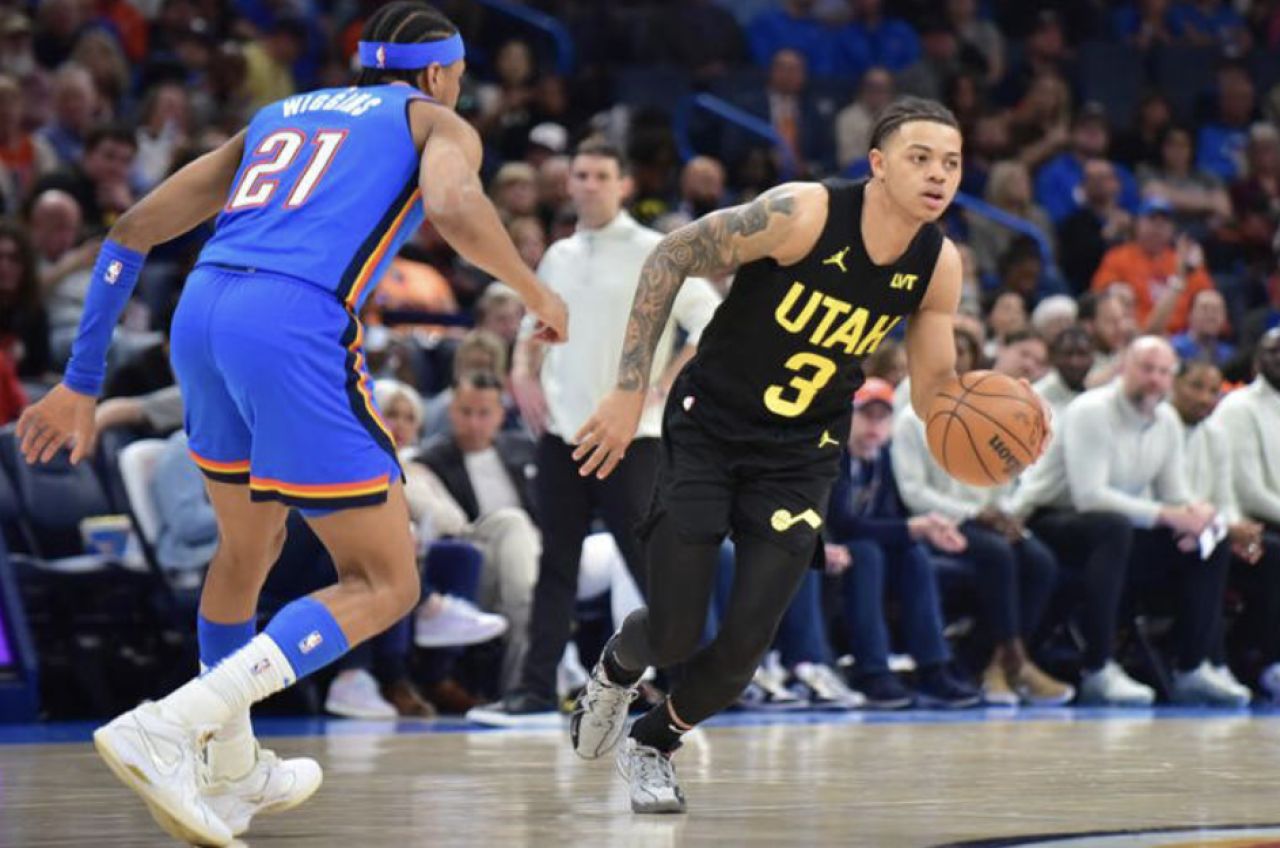When the Utah Jazz snagged Keyonte George at the 16th spot in the 2023 draft from Baylor, they didn't exactly plan for him to take charge at point guard, let alone start 44 out of 82 games in that role.
Let's be real, George's iffy assist-to-turnover numbers at Baylor, while playing on the wing, didn't scream "future facilitator" for the Jazz. But things took a turn after his impressive Summer League performances and his hustle during training camp. It became evident that not only was George more than ready for NBA action compared to rookies like Taylor Hendricks and Brice Sensabaugh, but he could also handle running the point, a position entirely new to him.
"It wasn’t our plan for him to be a starter going into training camp," Jazz CEO Danny Ainge said. "But he was good. He was a good player, he earned the respect of the coaches and his teammates and he earned that job. It wasn’t given to him."
In fact, the Jazz delayed George's increased role as much as possible. Even with rumors circulating within the Jazz's inner circle that George could be their future point guard, Talen Horton-Tucker started as the point for the first eight games of the season. But on George’s 20th birthday, he was moved into the starting lineup, and the hype around the rookie surged. He was playing like a seasoned point guard. By mid-December, George was averaging a solid 12.7 points and 5.9 assists with just 2.6 turnovers per game. However, a minor foot injury kept him out for almost two weeks.
During his absence, Collin Sexton showed significant improvement, and veteran Kris Dunn found a good rhythm in the backcourt with Sexton, building chemistry with Lauri Markkanen and John Collins. Simone Fontecchio also surpassed expectations. When George returned, he came off the bench but still played a crucial role on the team, balancing facilitating and scoring well for a 20-year-old rookie. His adaptability and learning curve in the NBA were impressive.
Breaking down George's rookie season, the initial 16 games as a starter represented a strong start. His return from injury showcased continued improvement and solid play. However, the trade deadline brought roster changes, with the Jazz opting for better lottery odds. George started most of the remaining games, but the rotations were unpredictable.
He wasn’t running point for the same team he started with. Instead, he played alongside different teammates each night, adjusting to various lineup combinations. Despite the challenges, George handled the role of starting point guard and being the primary focus of opposing defenses with remarkable composure.
Coach Will Hardy acknowledged the difficulties faced by the rookies, stating, "You want to be in a role that you can handle... there were moments where (the rookies) were probably getting too much." Considering this context, it’s fairer to evaluate George based on the first two-thirds of the season, where he showed promise and growth.
"He’s way better now than he was to start the season," Ainge noted. "I’m still not sure he’s a franchise point guard. I think he can play point guard... he’s probably more comfortable with that at this moment in time. But this experience of learning the point guard position was a big step for him. And just provides a lot of versatility for our team going forward."
Despite the uncertainties, it's premature to make sweeping judgments about George's potential based on his rookie season. With only 47 games played before the trade deadline, George has demonstrated glimpses of being a capable lead guard. His ability to create plays and his maturity on the court suggest a bright future. However, a more comprehensive assessment of his abilities will likely unfold in the 2024-25 season, given the unpredictable nature of the Jazz's season.

Login